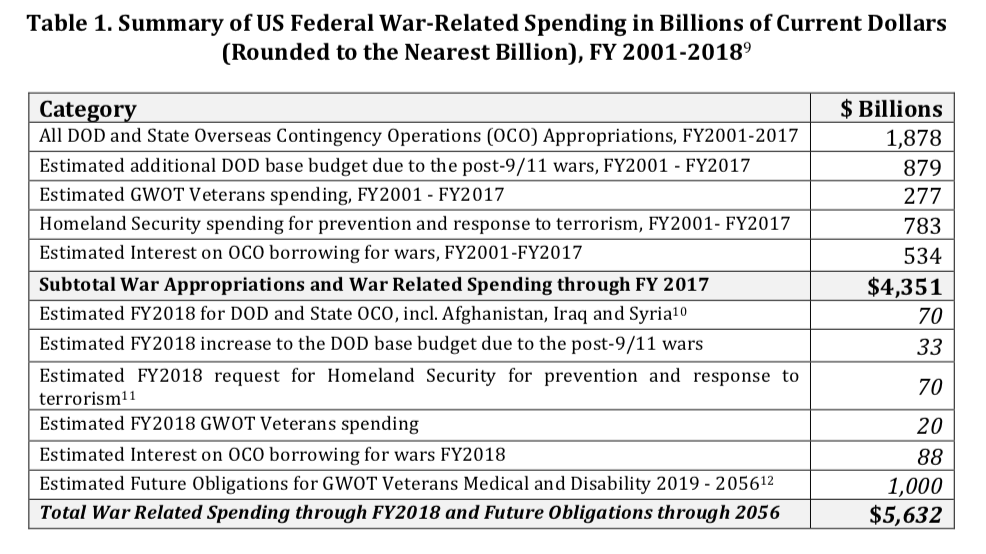Tuesday marked the seventeenth anniversary of the terrorist attacks of September 11, 2001. As it should be, the day was marked by remembrances and tributes to the victims. However, it is also incumbent upon us as a country to think of the costs of the policies put in place after the attacks. Some of those costs are not quantifiable. They involve social disruption and personal and national trauma. Others are about the economic effects of the wars and military buildup that the country embarked on over more than a decade and a half after the attacks. However, one cost that should be quantifiable is the financial toll of those wars. Yet, an accurate tally remains elusive.
As Laicie Heeley of the Stimson Center wrote Tuesday at her site Inkstick,
Since the twin towers fell, spending for the “Global War on Terror,” has spread to almost every federal agency on the books, with increases not just at the Departments of Defense, State, and Homeland Security, but also at the Departments of Agriculture and Commerce. By the count of anonpartisan group of budget and counterterrorism experts, which I led, this spending comes to a grand total of $2.8 trillion.
But, we don’t really know much beyond that total, which is clouded, first and foremost, by the fact that the US does not have one consistent definition for what constitutes counterterrorism. While a broad definition is handed down to agencies by the Office of Management and Budget (OMB), those agencies are free to interpret the definition on their own. Over the years, our study group found that this method left a lot of room for inconsistencies, including internal overlap of issues, and even innate bias in the way programs are prioritized government-wide.
Last year, the Department of Defense and Internal Revenue system released an estimate of the cost of America’s post-September 11thwars as a result of provision included in the fiscal year 2017 National Defense Authorization Act by Congressman John Lewis. The total was $1.5 trillion, or $7,700 per taxpayer. In a more detailed estimate from March of this year, the Pentagon again put the cost of the wars at $1.5 trillion. However, the figures only account for the Pentagon’s portion of these wars. As the Cost of War Project at Brown University’s Watson Institute for International and Public Affairs has shown, much of the cost of these wars will come in the form of long term medical care for veterans that is paid for outside of the Pentagon’s budget (see the table below for project’s estimate).
In the introduction to a report last year discussing the fragmented nature of the data on the cost of the wars, Anthony Cordesman of the Center for Strategic and International Studies wrote, “One of the striking aspects of American military power is how little serious attention is spent on examining the key elements of its total cost by war and mission, and the linkage between the use of resources and the presence of an effective strategy.” Cordesman blamed both the executive and legislative branches for this failure. It is not surprise though that neither wants to understand the full costs of these wars, as it might constitute a first step toward accountability for them.
As I’ve written elsewhere, knowledge of the costs of America’s wars is likely insufficient to producing political accountability for them. However, it is necessary. An accurate accounting of the full costs of the country’s post-September 11th conflicts is a first step to putting in place policies that might raise the salience of war for an American public that is largely insulated from them.
